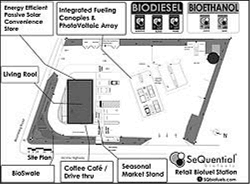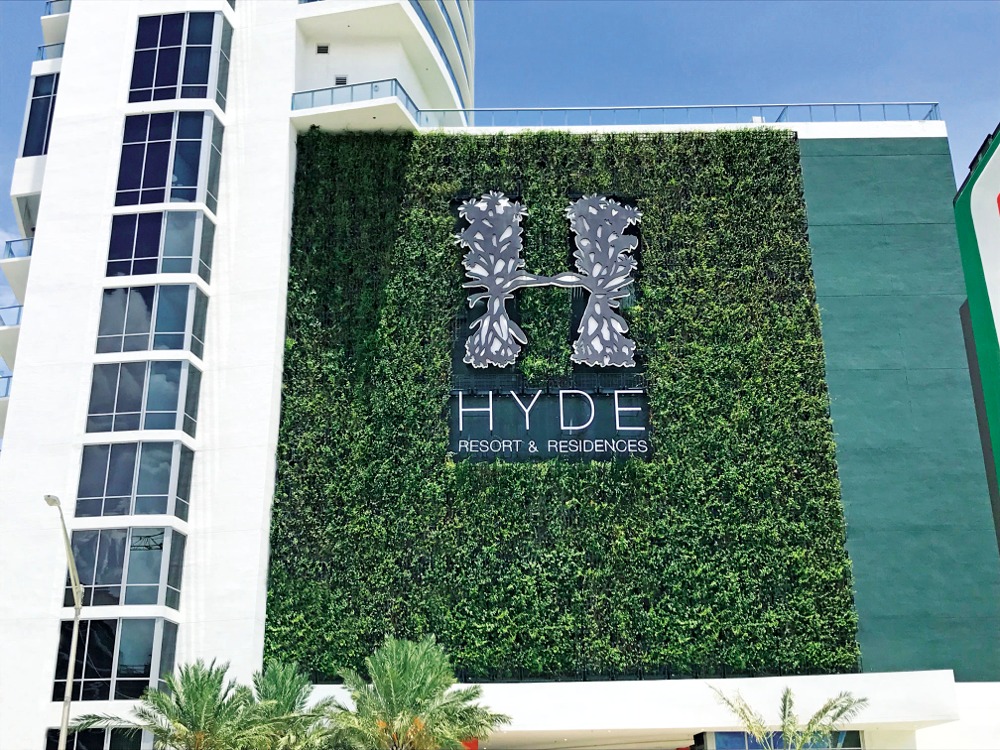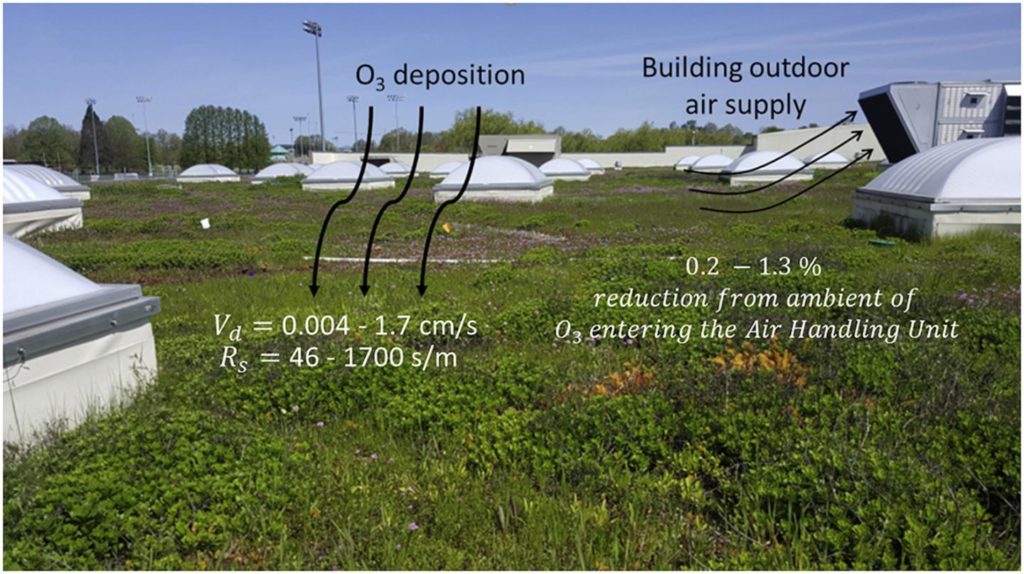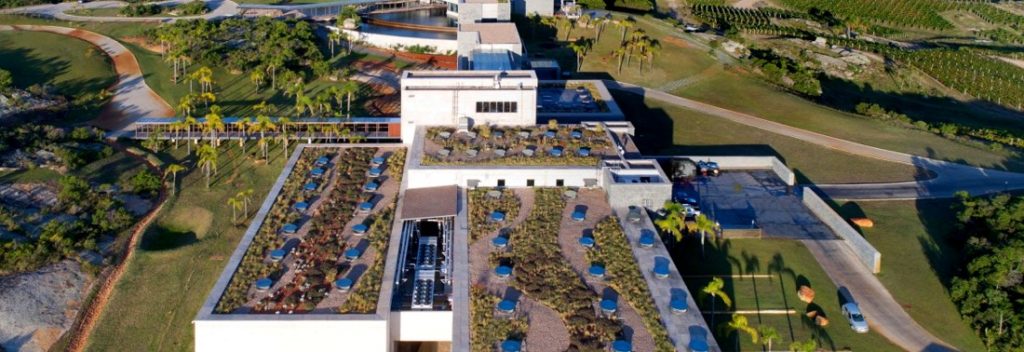Greenroofs.com Project of the Week: 5/16/11
SeQuential’s Biofueling Retail Station
Eugene, OR, USA
1,900 sf. Greenroof
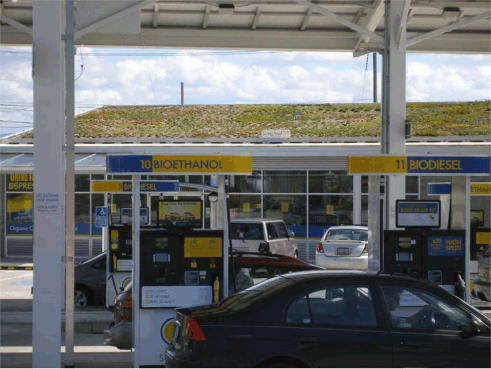
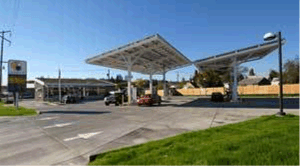 Year: 2006
Year: 2006
Owner: SeQuential Biofuels
Location: Eugene, OR, USA
Building Type: Commercial
Type: Extensive
System: Custom
Size: 1,900 sq.ft.
Slope: 17%
Access: Inaccessible, Private
Project Description & Details
SeQuential is an innovative company that produces fuel for vehicles predominately from off season farming of canola oil and agricultural and industry waste. Completed in September, 2006, the SeQuential Biofuel Station is a demonstration in realistic, feasible, and sustainable technologies featuring examples of real world solutions that reduce energy usage and impacts on local water quality. These features include solar panels on the fuel pump canopies, passive solar design of the convenience store, and a vegetated roof that is part of a site-stormwater system including bioswales and a detention pond.
The living roof contains over 4,800 individual plants in 5 inches of growing media. The layer of plants and engineered soil reflects sunshine and acts as insulation, keeping the interior building space cooler during the summer months. In addition to being project managers, Habitats, Inc. staff designed the fuel station site plan, landscape and stormwater features, and designed, installed and planted the vegetated roof. They researched available grant funding, explored LEED certification and worked with local and state planners to secure permits for the project.
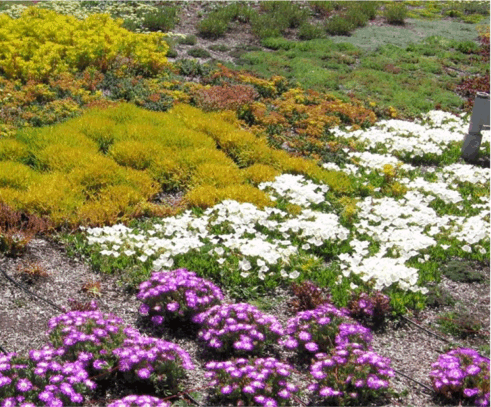
Designers/Manufacturers of Record
Site and Landscape Design & Green Roof Design and Installation:
Sarah Whitney, Habitats, Inc.
Architect: Susan Hill, Tate Hill Jacobs
Mechanical, Plumbing and Electrical: Solarc Architecture and Engineering
Solar Array Design and Installation: Weber Elliott Engineers
Transportation and Sanitation Planning: Branch Engineering
General Contractor: Pacific Northwest Environmental
Solar Array Design and Installation: Vince McClellan, Energy Design
Site Remediation: Oregon Department of Environmental Quality
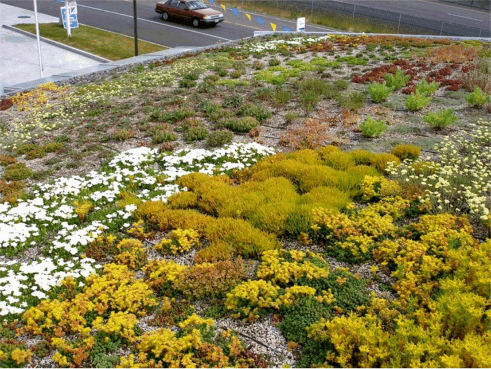
Additional Info
SeQuential Biofuels is a Portland fuel company born in a Eugene garage in 2000 when co-founders Ian Hill and Tomas Endicott were home-brewing biodiesel, and in 2006 became the first all-biofuel station in the Northwest, and eco-friendly to boot. And it was a huge help that Ian’s mother, Susan Hill of Tate Hill Jacobs, was the architect.
“It is our mission to lead the renewable fuels movement in the Pacific Northwest by expanding the awareness of the economic and environmental benefits of domestically produced biofuels. It is our vision to offer retail options and promote quality sustainable fuel alternatives to answer consumer’s growing demand for choice. It is our goal to see biofuel regionally produced and regionally consumed.” ~ SeQuential Biofuels
Today, SeQuential’s Biofueling Retail Station is a mixed-use property that provides biodiesel fuels to a growing fleet of environmentally friendly vehicles but in 2005, along with other programs, SeQuential used an EPA brownfield cleanup grant – the first of this type – to remediate the former gas station.
Many participants were involved, including Oregon Department of Environmental Quality (DEQ), SeQuential Biofuels, U.S. EPA Region 10, Lane County Property Management, Lane County Board of Commissioners, Oregon Economic and Community Development Department, and the Oregon Department of Energy. Also known as the “Lane County – Sequential Biofuels Project,” in 2007 it received the Phoenix Award Special Recognition for Energy Innovation. Read about the award and their huge efforts here.
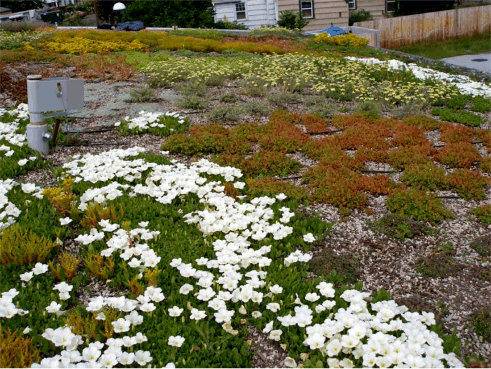
The station offers five blends of biofuels: E10, E85 (bioethanol), B5, B20, and B99 (biodiesel)- the numbers after “E and B” indicate the percentage mix of ethanol to gasoline, and biodiesel to petroleum diesel, respectively. A 33.6 kilowatt BIPV canopy with 224 solar modules (some with clear backing to allow the sunlight to shine through) shelters the pumps, providing up to half of the station’s electricity. The convenience store design takes advantage of passive solar heat and lighting to reduce energy needs and according to the customers, one of the biggest attractions of the store is the selection of products sold inside the Biofuels Station: a 60-40 mix of natural and conventional foods which include fair-trade coffee, natural sodas, and seasonal organic produce.
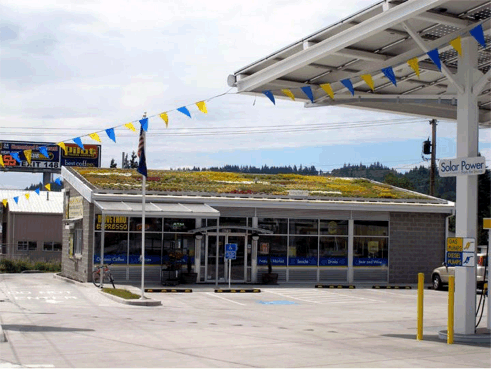
“Most people’s perceptions of gas stations are that they are dirty, dingy places, but that’s not always true.” ~ Ian Hill, co founder of SeQuential Biofuels in Biodiesel Magazine
Obviously, that’s not the case here! And because the station is just 1,000 feet from the Willamette River, concerns with runoff were great. The extensive living roof is highly visible with its 2:12 roof slope and is planted with a mix of Oregon species of low-growing succulents, bulbs for seasonal colors, and wildflowers. Working in tandem with the greenroof are the vegetated bioswales to further intercept runoff as well as capture pollution and silt.
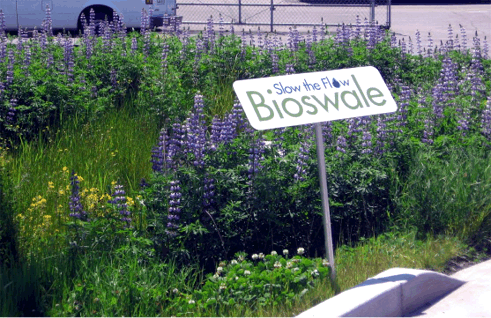
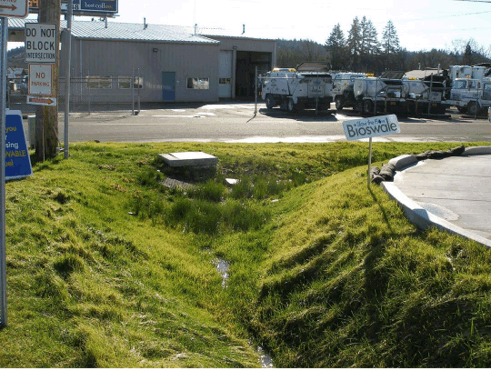
And educational signage informs the visiting public of the many eco features:
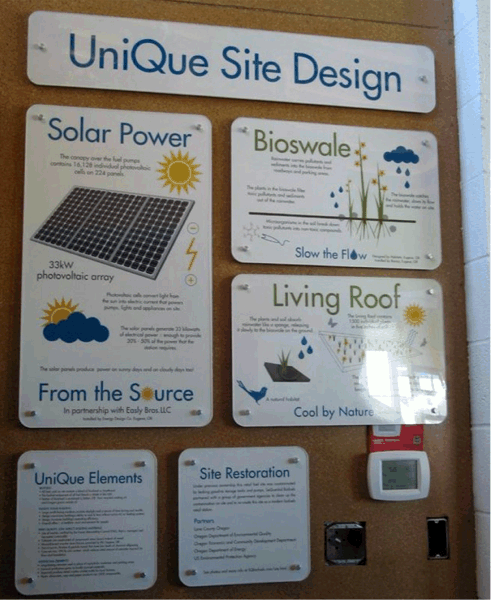
Continuing their commitment to cleaner energy, SeQuential Biofuels added a second station in Portland, Oregon, utilizing a sizable grant from the City of Portland. Oregon’s biodiesel industry has benefited greatly from a wide array of tools and incentives to foster the development of a robust local biofuels market, including Portland’s Renewable Fuel Standard (RFS). As in the case of greenroofs – or ecoroofs – Portland is a leader in this arena, too, by creating this market mover. City leaders believe that biofuels offer promising benefits for both Portland and Oregon as whole, including: local and regional economic development opportunities; improved air quality; reduced greenhouse gas emissions; and decreased dependence on volatile oil supplies.
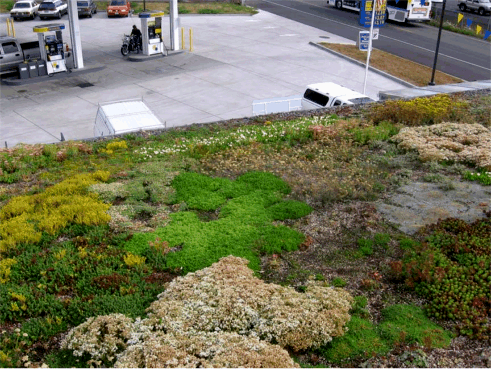
Currently, the RFS requires that all diesel fuel sold in the city as well as the entire state contain a minimum of 5% biodiesel or B5 (and that all gasoline contain a minimum of 10% ethanol, E10) – the first city in the U.S. to do so. A proposed City of Portland standard for all biofuel to contain a minimum blend of 10% biodiesel (B10) effective mid 2010 was temporarily suspended by the Portland City Council due to economic and technical circumstances, so it has reverted to B5 for now. All of the biodiesel sold in the City of Portland must meet ASTM quality standards.
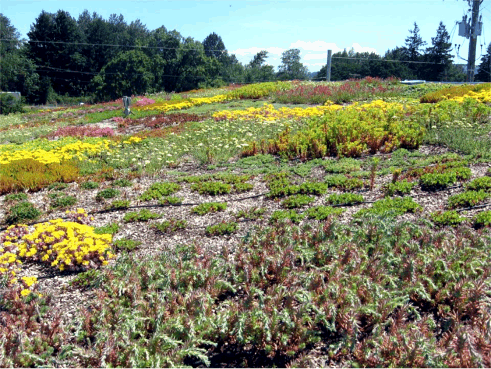
Biodiesel costs about 50 cents more per gallon than petroleum diesel, but is renewable and better for the environment. When burned, the fuel produces less carbon dioxide than petroleum and is made in part from recycled materials. Putting their money where their mouth is, the Portland Water Bureau’s own fleet has used B20, B50 and B99 blends for a few years, which has been a huge incentive for providers like SeQuential Biofuels.
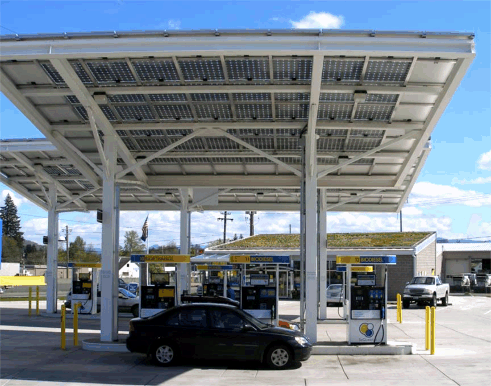
Read more from SeQuential Biofuels here, including the list of awards, and see the case study and more photos from the designers of the living roof and other stormwater features, Habitats, Inc., here.
Did we miss something? We’d love to hear from you! Click here to see more information about this project in The International Greenroof & Greenwall Projects Database. See how you can submit yours here.
Love the Earth, Plant a Roof!
~ Linda V.
 Greenroofs.comConnecting the Planet + Living Architecture
Greenroofs.comConnecting the Planet + Living Architecture
